We are pleased today to feature a guest blog from Maggie MacPherson. Maggie came to us via Dina Roberts, one of our staff scientists who met her some years ago while doing bird research in Costa Rica. Maggie works with acclaimed ornithologist and author Bridget Stutchbury. Be sure to check out some of her great photos toward the bottom as well!
Hello BSI blog readers! My name is Maggie MacPherson and I’m a Canadian graduate student who studies bird movements. While my graduate thesis is studying migration in Wood Thrush, I have maintained an avid interest studying the movements of owls since I began banding them in the fall of 2002. Of the eleven owl species that are found regularly in Canada, nine depend heavily on the boreal forest during their breeding seasons. Northern Saw-whet Owls have regular and predictable movements south out of their breeding territories each fall while most other owl species only move during ‘irruption years’.
What is an irruptive owl year?
Like the cycle of Lynx and Snowshoe Hare populations in the boreal, many northern owl species have a similar relationship with their populations responding to the availability of prey each year. The Boreal Owl, for example, spends the entire year in northern latitudes foraging mainly on Red-backed Voles except in years of low food availability. These ‘bad years’ typically follow ‘good years’ of high breeding success in the owls, when food was abundant. When vole populations crash due to over-harvesting by larger populations of owls, the owls are forced to move in order to sustain themselves. These are termed ‘irruptive years’, since large numbers of owls ‘irrupt’ into lower latitudes, moving in search of food.
A Test for Boreal Owl Projects in northern Ontario:
This year, I took my interest in understanding why and how birds undertake large-scale movements to a new level by participating heavily in the fall owl banding program near my hometown of New Liskeard, Ontario. My objective was to help start an annual Boreal Owl monitoring station, much like the program currently operating out of Tadoussac, Quebec (http://explos-nature.qc.ca/oot/) in cooperation with the current Northern Saw-whet Owl banding program at the Hilliardton Marsh (www.themarsh.ca). With loads of help from Mr. Bruce Murphy (the local master bander), and all my gear for measurement and documentation in tow, we turned on the audio-lure and waited. Following an exceptional year in 2009 with 68 Boreal Owls caught in our mist nets surrounded by marsh, bog and Black Spruce trees, I was certain we’d catch at least 1 Boreal Owl during my 2-week visit to the station. The large catch in 2009 was of exception for two reasons: 1) the Hilliardton Marsh is at the border of the boreal forest and southern hardwood forests of Ontario (therefore at the very edge of the typical habitat occupied by these owls), and 2) last year was not an expected irruptive year (comparably, the main Boreal Owl catching station in Quebec caught only 8 individuals). While I did get to see some northern daytime specialties such as Gray Jays and Northern Shrikes up close and personal, and we got to practice our techniques on over 630 Northern Saw-whet Owls, this year was most unexpectedly a flop for catching Boreal Owls.
A Future of Monitoring Boreal Bird Species in northern Ontario:
Although Boreal Owls have been lightly monitored in Canada since 1996, there is still much to be learned about this species. The Observatoire d’Oiseaux Tadoussac has revealed a 4-yr cycle in Boreal Owl populations and movements that we hope to test in Ontario. The next expected irruptive year is 2012 and we plan to be ready! The main objective of the Boreal Owl Project 2010 in northern Ontario was to begin a regular monitoring program for Boreal Owls. Due to the infrastructure already in place at the Hilliardton Marsh, including a host of volunteer staff, and its history of success in catching Boreal Owls, it seems like the perfect place to accommodate a movement study on this species in Ontario. While so much of our focus in studying any birds tends toward the phenomenon of long-distance migrants moving from that northern nursery known as the boreal forest, there is a need for learning about the irruptive movements of resident boreal birds and how they too will be influenced by climate change. Due to the remote nature of the boreal forest in northern Canada, there is still a large knowledge gap in what we know about resident bird species like the Boreal Owl, in comparison to those species that breed throughout the US and southern Canada. The future of the Boreal Owl Project in northern Ontario aims not only to catch these birds during irruptive years, but I also hope that we will be able to expand and learn more about the life history of this elusive little owl throughout the year in our beautiful northern forest.
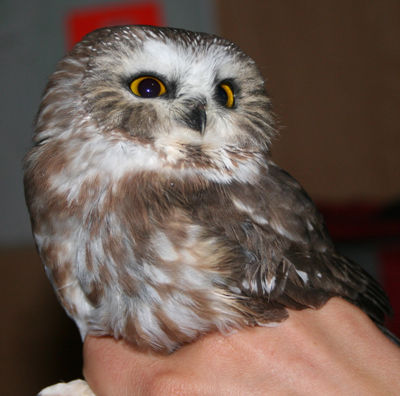
Northern Saw-whet Owl (Aegolius acadicus).
Credit: Maggie MacPherson
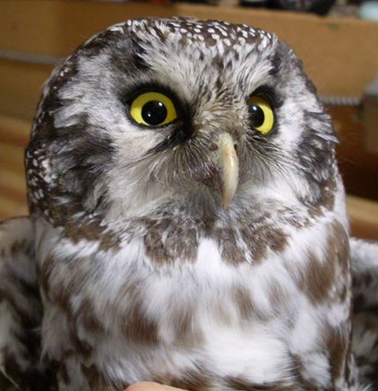
Boreal Owl (Aegolius funereus).
Credit: Bruce Murphy
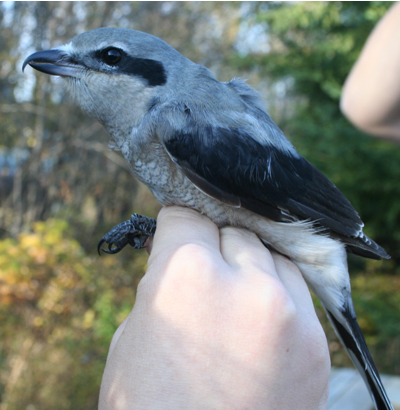
Northern Shrike (Lanius excubitor).
Credit: Maggie MacPherson
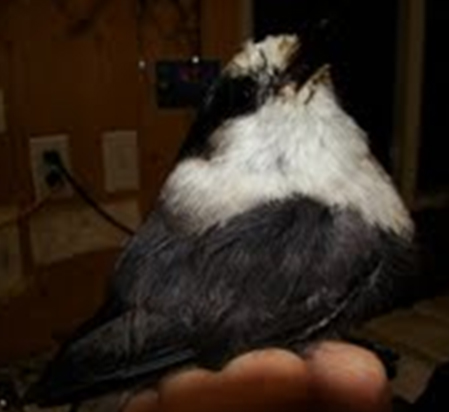
Gray Jay (Perisoreus canadensis).
Credit: Kristen Osborne
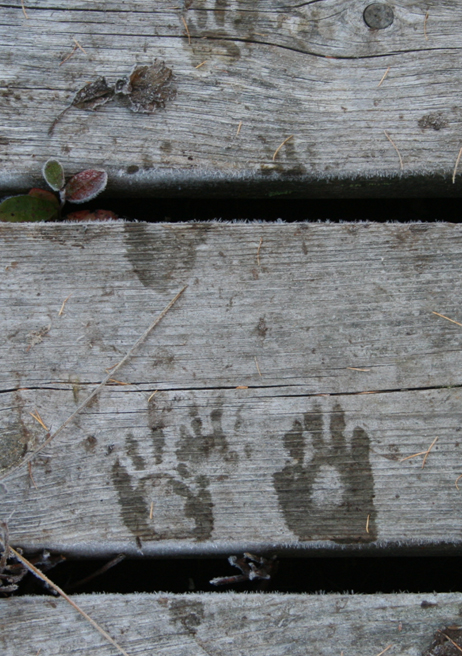
Frosty Beaver tracks visible most mornings on the boardwalk – the path leading towards the marsh from the Trembling Aspen stand.
Credit: Maggie MacPherson
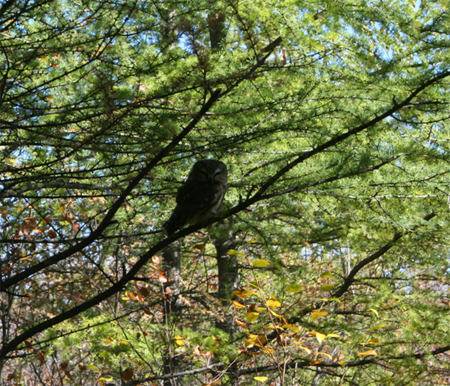
Daytime find: a rare UNBANDED Northern Saw-whet Owl (Aegolius acadicus).
Credit: Maggie MacPherson
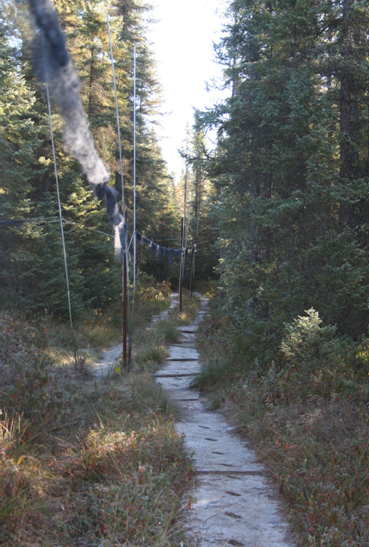
A daytime view of the net lanes cut in to the forest.
Credit: Maggie MacPherson
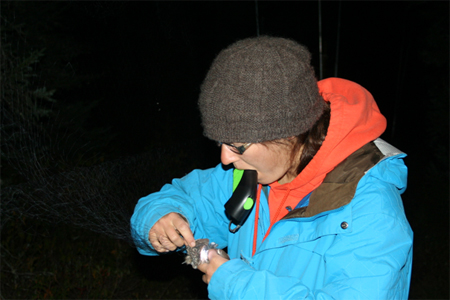
Specialized nets placed around a speaker playing owl calls trap the owls which are soon extracted with aide of headlamp or flashlight.
Credit: Maggie MacPherson
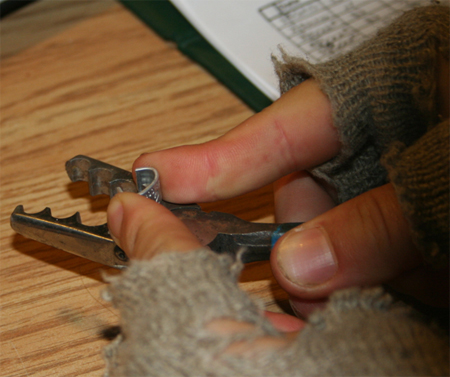
Chilly hands use special pliers to pry open a size 4 band soon to be closed atop a Saw-whet leg.
Credit: Maggie MacPherson
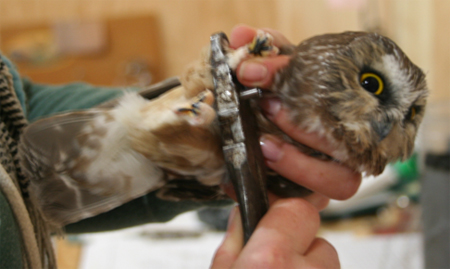
Banding a Northern Saw-whet Owl (Aegolius acadicus).
Credit: Maggie MacPherson
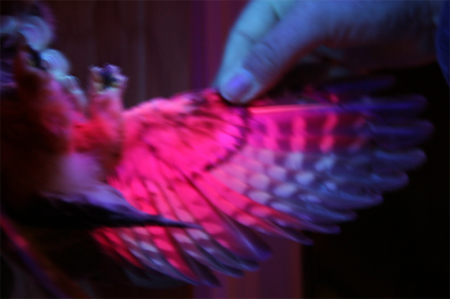
Under a black light, you can easily distinguish new (pink) feathers (Northern Saw-whet Owl).
Credit: Maggie MacPherson
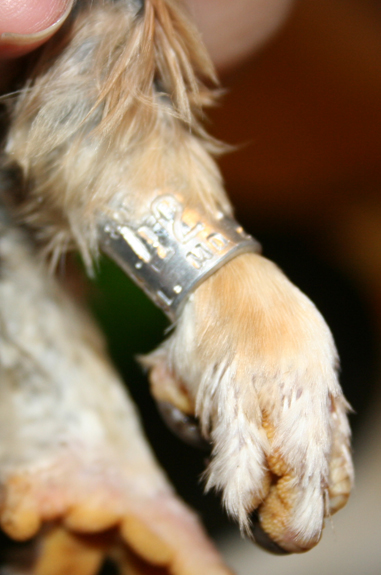
“Take only photos and leave only footprints...and a little band?” What the birds leave with after we catch them – a small aluminum leg band with a unique identification number.
Credit: Maggie MacPherson
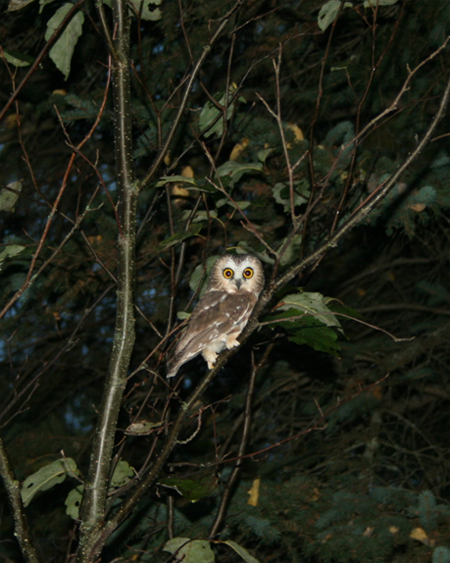
A Northern Saw-whet Owl perches near the banding shed after being released. Seconds later it has flown away.
Credit: Maggie MacPherson
...A special thanks to Maggie for this wonderful guest post!

